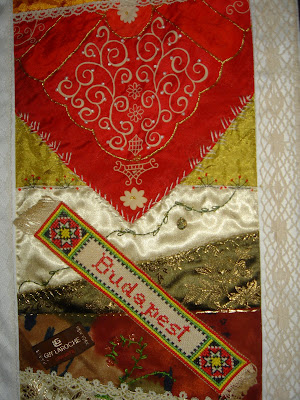We had a great year in music in 2008, with equally stunning artwork to accompany some of our favorite new releases. Yet, while many speculate the diminishing importance of album art - after all, experiencing the album art and liner notes from a thumbnail just isn't the same as the tactile experience of a record, CD or other physical artifact of the album - these covers stand as testament to the continued attention, affection and relevance given by bands and artists alike to music packaging...at least from an artwork standpoint.
From an everything-other-than-the-artwork standpoint, there's a lot of white space in the market to leverage the endless possibilities of experiential, interactive music packaging available today, and thus asserting the relevance of album art in today's digital record shop. What vinyl bears in physical art real estate, Web 2.0 exponentially offers in multimedia opportunity.
...but what, really, have we seen in music packaging interactivity? Sure, we've seen some downloadable songbooks and bonus features... Radiohead, of course, in 2007 inspired
Google themes through their cover of
In Rainbows, while Neil Young's
Greendale offered some
online interactivity.
...Or what about making the physical album relevant again? Take Beck's 2006 sticker
customizable album cover for
The Information. Music packaging in general has offered scarce innovation in design. I'd love to see
IDEO take this project on, a la the
Identity Card Exploration.
What we did see in 2008 album art, however, was a lot of stylistic graphic exploration. Sure, there were your usual suspects stylistically: the retro effect, plenty of photographic band portraits and the continuous play with the band name wordmark. But we also saw some interesting trends and themes emerge:
A reimagination of art historyFleet Foxes -
Fleet Foxes
Fleet Foxes self-titled album details the 1559 painting
Netherlandish Proverbs by Pieter Bruegel the Elder. Vocalist/guitarist Robin Pecknold on the original paiting:
"When you first see that painting it’s very bucolic, but when you look closer there’s all this really strange stuff going on, like dudes defecating coins into the river and people on fire, people carving a live sheep, this weird dude who looks like a tree root sitting around with a dog. There’s all this really weird stuff going on. I liked that the first impression is that it's just pretty, but then you realize that the scene is this weird chaos. I like that you can’t really take it for what it is, that your first impression of it is wrong."
Coldplay -
Viva La Vida
Coldplay's latest combines almost graffiti-like lettering and paint splattering with furiously fast paintbrush strokes juxtaposed against the delicate perfection of Eugene Delacroix’s 1830 painting
Liberty Leading the People.
Art Direction & Design by Tappin Gofton.
Cubes
Elbow -
The Seldom Seen Kid

Elbow's cube plays with perspective and architecture - the building of things, with the urban skyline in the background and flanked on either side with cranes, perhaps illustrating the backdrop for the album track The Loneliness Of A Tower Crane Driver.
It reminds me of the
Apple store cube on 5th Avenue in Manhattan.
Black Mountain -
In the Future
Black Mountain's In the Future feels eerily retro-post-apocalyptic, and was designed by the band's keyboardist, Jeremy Schmidt. Front man Stephan McBean notes, "I know Jeremy was inspired by all of those classic Pink Floyd and Led Zeppelin LP covers. That’s the sort of stuff he loves, and so do I."
There's something shiny in your mouth
Santogold -
Santogold
Santogold's debut album cover uses layering and mixed media, combining photography, a paper-cut-out styled wordmark and 3D-looking gold glitter breaking perspectival planes as it lays on top of the image and its reflection. Designed by Isabelle Lumpkin.
Foals -
Antidotes
Again, a layered, mixed media treatment with handmade typography for the band name wordmark. Designed by Tinhead.
...and finally...
Hand drawn sketchesThe Twilight Sad -
Killed My Parents and Hit the Road
This eery retro-comic cover has the the kind of ironic caption (title) you might find in a Lichtenstein. The masks on the subjects make it difficult to determine their ages - but it has a Children of the Corn kind of possessed child quality about it only found in horror movies.
Minotaur Shock -
Amateur Dramatics
There's a minimalist, yet playful simplicity to this cover that doesn't take itself too seriously - or maybe takes itself really seriously in a hipster kind of way... regardless, the subtle head cocking and oh-so-human stance gives the bird an endearing quality. The sketchy line quality implies movement, as the bird engages you directly - square in the face - seemingly about to move into the viewer's space.
Amateur Dramatics is David Edwards's 4th album. The cover was designed by a friend of Edwards', Warwick The Skipper.














































